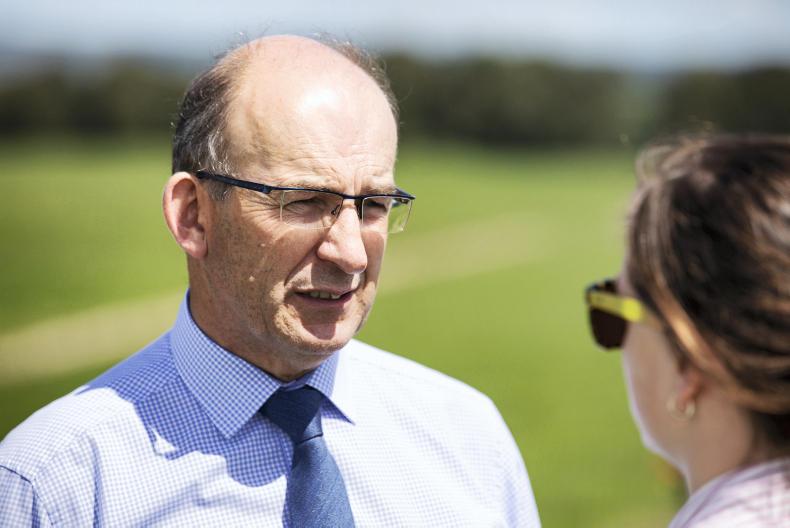Dairygold boss Jim Woulfe is planning around an average milk price of 29.88c/l for next year, he has told the co-op’s suppliers.
Speaking at a series of regional shareholder meetings, he said Dairygold is budgeting for an average milk price of 31.5c/l including VAT at 3.3% fat and 3.6% protein.
Positive outlook
Speaking to Dairygold members in Adare, Co Limerick, this week, he said the outlook for dairy markets is reasonably positive, the market is reasonably well-balanced but commodities are always volatile.
“The positive impacts on price are being dictated by powders like skim, which has seen a notable strengthening in price in recent weeks versus butter which led the market for dairy commodities over the last 12 to 18 months but has since weakened significantly,” he said.
The co-op is giving suppliers a revised section on calf welfare in its annual milk purchasing terms and conditions for 2020.
“In that, we are making our position very clear, that Dairygold will have a zero-tolerance approach to calf welfare issues,” said Woulfe.
Vigilance
“Farmers are excellent at animal husbandry and caring for their animals but we must be vigilant.
“We cannot let the minority cause problems for the vast majority of farmers. Calf welfare in a time of expansion, is an industry issue and needs an industry-wide approach,” he said.
He added that customers are familiar and interested in co-op schemes such as Arla’s in the UK (Arla 360), which bans calf euthanasia and has a minimum length of time that calves must stay on farms.
“We are working with the Department and other agencies and processors to develop that,” the co-op CEO said.
Dairygold now has processing capacity in place to cater for the planned milk expansion up to 2023. However, he said the co-op is seeing signs of “milk expansion fatigue”. “We are sensing some mood changes and some concerns in the milk suppliers’ attitude to continued expansion mainly due to the climate action plan, availability of labour,” said Woulfe.
Dairygold is planning to a conduct a more in-depth milk supplier census and milk forecast to 2025 to get an insight into members plans’ as they head into the next decade.
“This will obviously raise issues that we will need to consider and debate,” he said, referring to how future increases in processing capacity should be funded and by whom.






 This is a subscriber-only article
This is a subscriber-only article










SHARING OPTIONS: